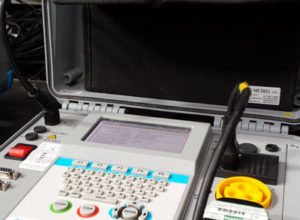A Guide for Sound Systems
Sound system alignment is a crucial aspect of live event production, ensuring that the audience experiences optimal audio quality and clarity. This guide will walk you through the process of sound system alignment, including techniques, case studies, examples, FAQs, further reading, and a detailed method for alignment.
1. Understanding Sound System Alignment
Definition: Sound system alignment involves the careful calibration and adjustment of various audio components to achieve balanced sound dispersion and coverage.
Objectives: The primary goals of sound system alignment are to ensure uniform sound distribution, eliminate phase issues, and maximize clarity and intelligibility.
Components: Key components include loudspeakers, amplifiers, signal processors, equalizers, and measurement tools.
Environmental Factors: Consider the venue’s acoustics, audience layout, and potential obstructions when aligning the sound system.
2. Techniques for Sound System Alignment
Measurement Tools: Utilize professional audio measurement tools such as Real-Time Analyzers (RTA), SMAART, or SIM for accurate assessment of frequency response and phase coherence.
Equalization: Use graphic or parametric equalizers to adjust frequency response and compensate for venue-specific acoustic anomalies.
Time Alignment: Align the arrival time of sound from different loudspeakers to ensure coherent sound propagation and minimize phase cancellation.
Crossover Alignment: Set crossover points and slopes appropriately to ensure seamless transition between frequency bands.
Speaker Placement: Position loudspeakers strategically to achieve optimal coverage and minimize acoustic interference.
3. Method for Sound System Alignment
Initial Setup:
Install and connect all audio components including loudspeakers, amplifiers, and signal processors.
Ensure that all equipment is functioning properly and cables are correctly connected.
Measurement and Analysis:
Use a measurement microphone and audio measurement software to analyze the frequency response and phase coherence of the sound system.
Conduct measurements at various listening positions throughout the venue to identify areas of concern.
Equalization and Processing:
Apply equalization adjustments to compensate for frequency response irregularities and venue-specific acoustics.
Utilize signal processing tools to implement corrective measures such as room correction algorithms or feedback suppression.
Time Alignment:
Measure the distance between loudspeakers and the listening position to determine the appropriate delay settings for time alignment.
Adjust delay settings to synchronize the arrival time of sound from different loudspeakers, minimizing phase issues.
Crossover Optimization:
Set crossover points and slopes for multi-way loudspeaker systems to ensure smooth frequency transitions and avoid overlap.
Verify crossover settings using measurement tools and fine-tune as necessary.
Speaker Placement Optimization:
Position loudspeakers according to the venue layout and coverage requirements, taking into account factors such as audience seating arrangement and obstructions.
Aim and angle loudspeakers to optimize sound dispersion and minimize reflections.
4. Case Studies and Examples
Case Study 1: Outdoor Music Festival
Challenge: Balancing sound dispersion across a large outdoor venue with variable environmental conditions.
Solution: Utilized line array speakers with precise aiming and zoning to deliver consistent sound coverage throughout the venue.
Case Study 2: Indoor Concert Hall
Challenge: Addressing reverberation and reflection issues in a reverberant indoor space.
Solution: Implemented digital signal processing (DSP) algorithms for room correction and deployed distributed loudspeaker systems for improved intelligibility.
5. FAQs (Frequently Asked Questions)
Q1: How often should I align the sound system?
A: Sound system alignment should be performed whenever the system configuration or venue layout changes significantly.
Q2: Can I align the sound system without specialized measurement tools?
A: While professional measurement tools provide precise data, basic alignment can be achieved through subjective listening tests and manual adjustments.
Q3: What is the role of a sound engineer in system alignment?
A: A sound engineer oversees the entire alignment process, from initial setup to fine-tuning, utilizing their expertise to optimize audio quality.
6. Further Reading and Resources
Books:
“Sound System Engineering” by Don Davis, Eugene Patronis Jr.
“The Sound Reinforcement Handbook” by Gary Davis, Ralph Jones
Online Resources:
Conclusion
Sound system alignment is a critical aspect of live event production, requiring a systematic approach and attention to detail. By following the outlined method and drawing insights from case studies and examples, sound engineers can achieve optimal audio quality and ensure an immersive experience for the audience.
